The importance of pollinators
Pollinator conservation grows in Montana
By John Grassy/Photos by Eliza Wiley

As a boy growing up on the family ranch in Ekalaka, Montana, Doug Bonsell was an avid reader of The Conservationist.
As an aspiring rancher, he learned about the newest grazing practices and the importance of healthy soils. He read a story on habitat – what it was, why it was important, and how a landowner might restore or create habitat where none had been before. By the time he had reached high school, Bonsell was making plans for developing habitat on the ranch. His first interest was birds, upland species such as sharp-tailed grouse and Hungarian partridge. Years later, when Bonsell and his wife, Ronda, purchased the family ranch, his visions of bird habitat became reality.

Doug and Ronda Bonsell of Ekalaka, Montana.
Over many years the couple would plant more than 17,000 trees and shrubs. They planted buffalo berry, chokecherry, cotoneaster, juneberry, sumac, Russian almond, silverberry, currant, honeysuckle, and apricot. They left standing grain and planted cover crops. In number and diversity, the birds flourished.
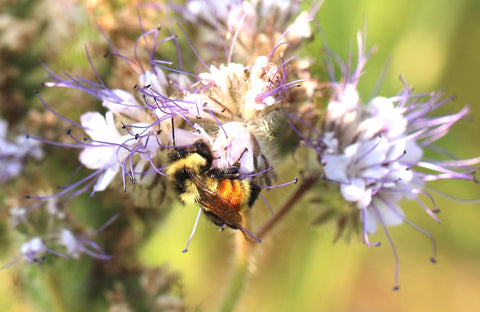
Around 2012, Doug's interest in habitat found a new focus — pollinators, the term applied to a wide range of insects and other animals that carry out one of the world’s most important natural functions. As they visit flowering plants in search of nectar or pollen for food, these insects transfer grains of pollen from the "anther" to the stigma of a flower, fertilizing it, and enabling the plant to produce seeds. Bees, wild and domesticated, are the most important pollinators of all, but moths, butterflies, wasps, flies, hummingbirds, even some ant and beetle species pollinate as well.
The Bonsells in 2013 found they could be eligible for a program to cover a portion of the costs of planting a variety of wildflowers and other plants that attract wild pollinators — and the small colony of honey bees they kept. The 2008 Farm Bill contained provisions to encourage pollinator conservation; the 2014 Farm Bill continued to support pollinators through the Environmental Quality Conservation Program Honey Bee Pollinator Special Initiative, which provides financial assistance to landowners interested in creating, enhancing and managing habitat for honey bees.
The Bridger Plant Materials Center furnished the seed stock while the Bonsells prepared the ground. In the fall of 2017, NRCS furnished a seeder for the planting. Most of the plots contained a single variety of flower; others were planted with a mix of several species.

A bee box helps attract pollinators at the Vilicus Farms in Havre, Montana. Photo by Eliza Wiley
Doug Bonsell said the pollinator project benefits the natural world that has sustained him as a rancher. “If you keep taking from the land, you’re going to have nothing left. You’ve got to give back,” he said. “The situation with pollinators is like so many others – if everybody does a little, that’s a lot.”
Domestic honey bees and their wild counterparts need help, according to Stephanie King, a resource conservationist with NRCS in Bozeman. In the mid-1990s, honey bee colonies in the United States and other countries began to experience dramatic, unexplained declines. “Beekeepers were losing 35 to 50 percent of their hives annually,” King said. “Worker bees would leave the hive and simply never return.”
“The situation with pollinators is like so many others – if everybody does a little, that’s a lot.” — Doug Bonsell
By 2006, the phenomenon had a name: Colony Collapse Disorder. While there has never been a single identified cause, several factors are likely involved, including mites, pesticides and pathogens. “The newer pesticides are very hard on bees and other pollinators,” King said. “Honeybees bring back pesticides to the hives, which can open the door to impacts from diseases or pests.” Wild bee species and other native pollinators have also been affected, she said.
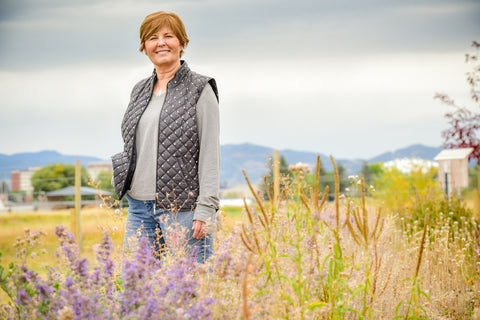
Stephanie King, Resource Conservationist, Natural Resource Conservation Service in Bozeman, Montana. Photo by Eliza Wiley
In addition to the impacts of diseases and pesticides, pollinator declines have also been linked to habitat loss, including nectar sources and, particularly for wild bees, suitable nesting and wintering sites.
During the first year of its pollinator initiative in Montana, Natural Resource and Conservation Service entered into 40 contracts with landowners on about 1,600 acres in 16 counties in Montana. Funding problems hindered enrollment in 2017, but King said the issue of pollinator declines isn’t going away soon, and natural resource agencies have vital roles to play.
“It’s really important that Montana, the NRCS and local conservation districts continue to work on this,” King said. “We need to keep at it, and keep the public interested in it.”
Landowners who have participated in the pollinator program “have come away amazed at what a difference they can make with just a small parcel of land,” King said.
Heidi Fleury, an administrator for the Lake County Conservation District, has helped execute a county-wide initiative that encourage residents to create a pollinator garden to enhance the habitat for all pollinators.
A Lake County success story
In Western Montana, Susan Gardner grew up on a dairy farm in Lake County.
She remembers flood irrigating crops with her father, delighted by the world of clover blossoms and buzzing bees, not to mention the taste of the honeycomb. Years later, a workshop hosted by the Xerces Society provided Gardner with hard facts to complement her experiences with pollinators: their vital importance to food production, their habitat, their numbers and diversity, and especially the problems they face.
“My favorite fact is that one out of every three bites of food you take, you can thank a pollinator for producing,” Heidi Fleury, with the Lake County Conservation District, said. Thirty-five percent of global crop production is dependent on pollinators. “We’re focused on making sure there’s a large amount of habitat out there for honey bees and other pollinators year-round.”
As of 2017, Fleury said Lake County had at least 100 pollinator plots measuring 2,500 square feet or less. The Lake County conservation has offered a seed mix at no cost to landowners who want to participate.
Jon and Jean Gravning are Lake County residents whose interest in honey bees and insects in general led them to plant pollinator habitat, and then to double the size of their garden to 5,000 square feet after they heard about the free seed mix.
Getting a pollinator plot established and thriving involves patience, labor, and a certain amount of trial and error. “We bought our first batch of wildflower seeds commercially, and they did really well the first year, but got choked out by grass the second year,” Jon Gravning said. “We did a better job of planting the new batch of seeds. I used a spreader, then raked them into the ground. It’s important to kill off any grass before you plant, and you need to water at least once a week.”
Jean Gravning said there’s also a lot of hand weeding that goes with it and you have to do it to keep the flowers vigorous.
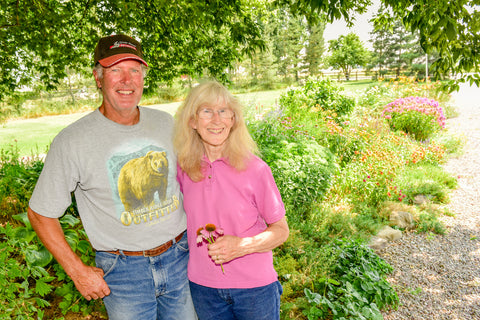 Jon and Jean Gravning, of Polson, Montana, are participants in the Lake County Conservation District Pollinator initiative. They have planted more than 5,000 square feet in pollinator-friendly plants. Photo by Eliza Wiley
Jon and Jean Gravning, of Polson, Montana, are participants in the Lake County Conservation District Pollinator initiative. They have planted more than 5,000 square feet in pollinator-friendly plants. Photo by Eliza Wiley
The Gravnings planted a diversity of species mixed together – purple and white prairie clover, Indian blanketflower, western yarrow, arrowleaf balsamroot, prairie aster, penstemon, basilia, native sunflowers, and many others. Some native grasses, such as big bluegrass and slender wheatgrass, are also part of the mix. The key to a successful plot for pollinators is to offer some kind of food source from spring through fall.
“It’s not easy establishing these plants,” Ben Montgomery, a supervisory conservationist with the NRCS office in Ronan, said. “It takes some work and some luck. One of our goals right now is to try a lot of different species and learn which ones do best. Through monitoring we can continue to improve the seed mixes. In five years, the mix probably looks different than it does today.”
The Gravnings see an impressive assortment of insects visiting their plots: bumble bees and other native bees, honey bees, fly species that resemble bees, and a diversity of butterflies, including skippers, swallowtails, and monarchs. They also noticed a lot of praying mantis on their property, possibly drawn to the abundance of insects to hunt.
When people think of pollinators, they most often think of honey bees, which along with the alfalfa leaf-cutting bee are the two most important pollinators in the world for agriculture. Neither species, however, is native to North America. Though they don’t receive as much attention, native bees produced about $3 billion in pollination services for the nation’s agricultural output in 2009, with honey bees providing $11.6 billion.

Ben Montgomery, an NRCS District Conservationist, left, sits with Susan Gardner and Heidi Fleury in Ronan, Montana. Photo by Eliza Wiley
And then there’s the critical service that native bees provide to native trees, shrubs, and forbs, 85 percent of which rely on pollinating insects to reproduce.
THE SCIENCE
In Dr. Casey Delphia's office on the campus of Montana State University, specimen boxes in the lab contain a remarkable assortment of sizes, shapes and colors, from the gargantuan Bombus (bumble bee) species to the tiny Perdita (mining bee), metallic blue and smaller than a grain of rice.
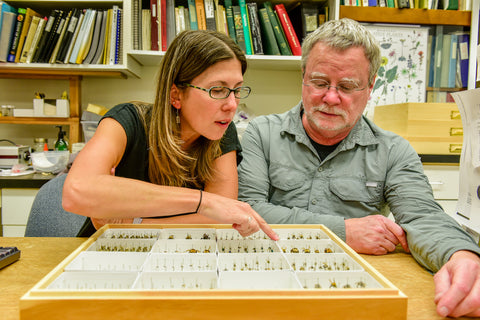 Dr. Casey Delphia and Dr. Kevin O’Neill are pollinator researchers at Montana State University. Photo by Eliza Wiley
Dr. Casey Delphia and Dr. Kevin O’Neill are pollinator researchers at Montana State University. Photo by Eliza Wiley
What’s even more remarkable, Delphia says, is what’s not known about wild bees in Montana. To date, scientists have identified about 450 species. “We think there could be around 1,000,” Delphia said. “Montana is one of the least-studied states. Colorado has identified 946 species and we expect Montana is home to at least that many.”
The lack of knowledge only compounds the difficulty of understanding population trends. “We really don’t know if they’re declining,” Delphia said. “Since there’s never been a historic sampling, we have no baseline data to work with.”
Between 2013 and 2015, an MSU graduate student sampled native bees in the epicenter of a large wheat-growing region in Montana. Delphia thought the student might collect a few species at best. Instead, the student identified 109 species, all of them “eking out a living” in the middle of wheat country. Thinking about it today, the surprising results give Delphia cause for optimism, but also point out the tenuous state of affairs for pollinators in Montana and elsewhere, and the need for continued action.
Pollinator buffer strip grows between grain rows at the Vilicus Farms, in Havre, Montana. Photo by Jennifer Hopwood/Xerces Society
“Maybe what that shows us is there are bee species more resilient than we think, and we still have an opportunity to get out there and give them more habitat before we see more serious declines. There’s still the chance to save what’s present. If we can expand or restore more habitat, it’ll make me more hopeful.”
The growing awareness of pollinators and their habitat needs can only benefit Montana’s wild bees, Delphia said. Bees are the important pollinators, she said, while butterflies are “incidental pollinators,” meaning they have only a minor role in the pollination business compared to bees. “More habitat will ultimately benefit both managed and wild populations,” Delphia said, “but it’s really important for people to understand the difference between them.”
More habitat will ultimately benefit both managed and wild populations,” Delphia said, “but it’s really important for people to understand the difference between them.”
Doug Crabtree and his wife, Anna Jones-Crabtree, operate a 7,400-acre organic farm on the plains of northern Hill County, Montana.
They have developed more than 300 acres of pollinator habitat, with more planned on land they just started farming. Their goal is to benefit wild bees and other pollinators by establishing native plants in a region where agriculture has reduced natural diversity. The couple incorporated buffer strips of native flowers and grasses 20 feet wide into their crop fields. In addition to offering food for pollinators, the strips mitigate wind, capture snow and provide habitat for other wildlife.
The family's effort at Vilicus Farms started in 2010 when they received an NRCS contract to cost-share the expenses of preparing and seeding their first 34 acres of buffers, in a field they were converting to organic production. They’ve tried several seed mixes and continue to monitor and experiment with flower species.
 Anna Jones Crabtree and Doug Crabtree at their Vilicus Farms in Havre, Montana. Photo by Eliza Wiley
Anna Jones Crabtree and Doug Crabtree at their Vilicus Farms in Havre, Montana. Photo by Eliza Wiley
“We continue to find more advantages to integrating nature into the farm,” Doug Crabtree said. “We’re finding a number of other beneficial insects along with the pollinators, and the strips also enable the layout and management of our five- and seven-year crop rotations.”
Doug and Anna’s operation, Vilicus Farms, was the first “Bee Better Certified Farm” in Montana in 2018. The certification is a new project of the Xerces Society in Portland, Oregon.
Doug and Anna Crabtree say their pollinator project mirrors their commitment to stewardship.
Wheat, Montana’s number one crop, is wind-pollinated and doesn’t require the services of bees. Alfalfa seed is another major crop for the state, and while native bees visit alfalfa and contribute to the pollination effort, their numbers are limited, “and when you have a single crop on a very large scale, you need a bee that’s in abundance,” Delphia, at MSU, said.
To reach that large scale, landowners in Montana utilize the non-native alfalfa leaf-cutting bee, which is raised commercially.
“This is about cultivating a relationship with the other living things in your place,” Anna Crabtree said. “The more diversity we can incorporate into our farm, the better our system functions. It’s a collaboration.”

Susan Gardner, a board member of the Lake County Conservation District. Photo by Eliza Wiley




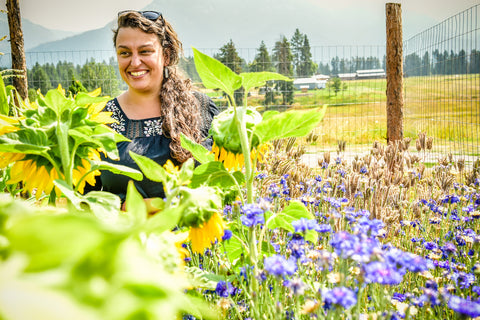
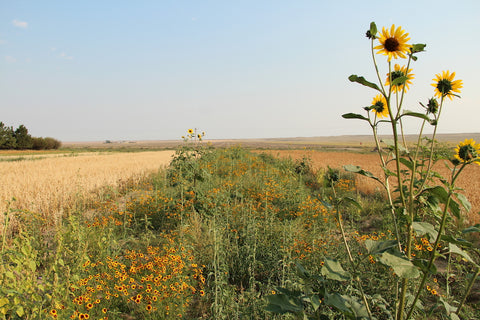
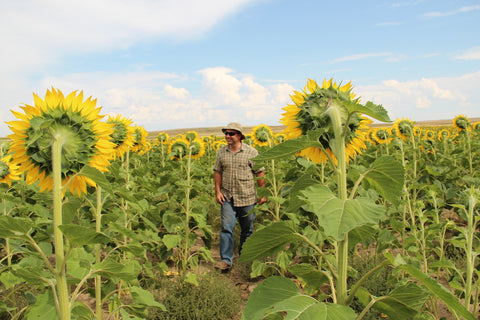
Leave a comment